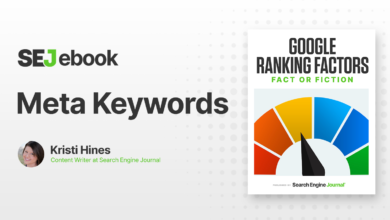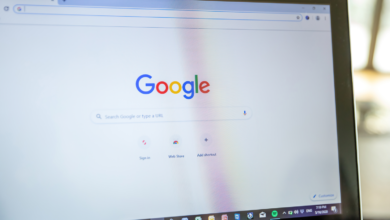12 Headline Writing Tips To Drive Traffic & Clicks
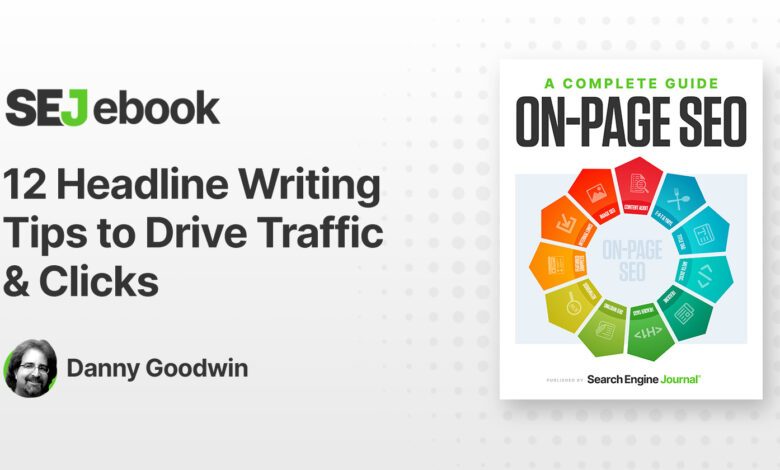
Imagine this: You spent hours researching and writing a great article.
You obviously want people to read the article because you worked so hard to create it.
But here’s the sad truth: On average, 6 out of 10 People only look at headlines before sharing an article. Only 49% claimed to have read the articles.
What should a content creator do?
There is a clear relationship between the value and interest of an article title and whether people are intrigued enough to click on it.
Writing a strong headline isn’t an exact science, but a lot of data has been compiled and studied over the years to provide some clues as to what makes a great strong headline.
Here are some tips on writing headlines to win over these readers and get you more clicks.
12 tips for writing click-worthy titles
Your title serves the primary role in making a first impression on a potential reader.
We all know how important first impressions are.
Being average is not better than being bad. Your headline is either exceptional, or it can be forgotten. There aren’t a lot of gray areas.
The following tips and methods below will help you turn a weak or average title into one that will win clicks and attract readers.
1. Look at the Google search results
Once you’ve researched the keyword(s) you plan to target, analyze the search engine results page (SERP) to see which articles compete against it.
How can your content stand out?
What is the user’s intent?
Are the top hits lists? Articles How? commercial content?
If you are going to rank on page 1, you need a thorough understanding of what kind of content is already out there if you are going to be a serious competitor.
2. Make an emotional connection
Emotional titles reliably work better than neutral ones.
Using strong words to trigger emotions in your reader enhances their first impression of your content while building curiosity, awe, or anticipation to read more.
Best emotionally targeted headlines:
- Happiness.
- love.
- afraid.
- anger.
- disgust.
- emphasis.
- hopefull.
However, use caution when using emotional titles. You don’t want to fall into the clickbait trap of not delivering what you promised your readers.
3. Use of names
For this title trick to work, the names need to be well known to your target audience.
Brand names can be just as powerful as people.
For example, when targeting SEO topics, using “Google” in your title will drive clicks, as will using “John Mueller.”
These are the most widely recognized brands and figures in the industry.
The names you choose to feature in your headline should be specific to your specific brand niche.
4. Use numbers
The numbers are naturally eye-catching.
In an endless sea of words, numbers grab our attention and make us pause. We remember numbers because they help our brain organize information.
Use the power of lists and numbers to beat your competitors in the SERP.
5. Make the benefits to the reader clear
When a reader decides whether or not to click on an article, the question they ask themselves is, “What can I get from this?”
The title should indicate what value the reader can expect from clicking and reading it.
High-performance content serves one or more of these purposes:
- entertainment.
- get engaged.
- empowerment.
- Enrich.
- education.
- Tells.
- Inspires.
- Answer a question.
- Provide a solution.
When a reader decides to click through to your article and invest their time and attention, they have already set expectations based on the benefit promised by the headline.
Make the reader’s benefit clear, but don’t over-promise.
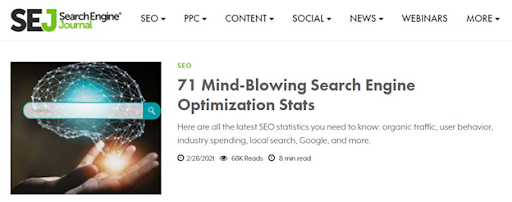 Screenshot taken by the author in July 2021
Screenshot taken by the author in July 20216. Optimization for Humans and Research
Your first priority is to optimize so that your audience finds and wants to click on your content.
Your second priority is SEO, especially Google.
The good news is that humans and search engines can generally agree on what they like to read, including content that is:
- Flour.
- comprehensive.
- reasonable.
- engage.
- High quality.
- Informative.
- specific.
- unique.
- useful.
- valuable.
Make sure to include your primary keyword in the title to optimize it for Google and help people find your content when they search for your topic.
If you need inspiration, check out these free headline generators to help you write a better headline.
However, keep in mind that these tools don’t know your audience as well as you do, and just because a title is generated automatically doesn’t mean it’s the most advanced for SEO.
These free tools are best used for idea generation and analysis, and are not a substitute for a man-made title.
If you’re using WordPress, tools like AIOSEO and Yoast are great SEO-based plugins that will give you a built-in analysis of your SEO ranking (as well as the post as a whole).
They will also give you suggestions to help you improve your rating, as you can see with AIOSEO below:
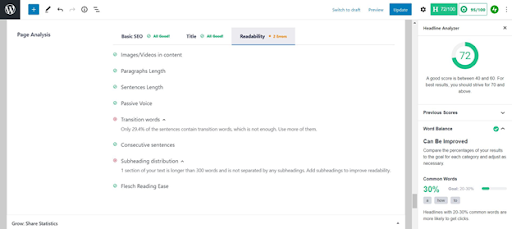 Screenshot taken by the author in July 2021
Screenshot taken by the author in July 20217. Type multiple addresses
Chances are, the first title you come up with won’t be gold.
that’s good! In fact, this is normal.
Some people advise writing 10 or more titles for each piece of content and then deciding which option is best.
Write a variety of titles targeting different formats. Don’t just switch the word order.
Try to target different feelings, perspectives, and styles, such as:
- Humorous.
- optimistic.
- unexpected.
- Witty wordplay.
- numerical.
- A question.
- Thought-provoking.
- first person (me).
- Second person (you/your).
- Third person (he/they/they).
Use headline analysis tools to track SEO ratings for each option when making your decision.
8. Test your titles
Click data doesn’t lie, but your brain does!
Don’t be so out of your mind – we’re all biased. Our brains convince us that we are smart and creative, and of course all of our titles are genius.
But a lot of fantasy titles don’t get a single click.
Despite what your brain thinks, the people who cross your article are not responsible. It’s the address.
Eliminate bias by relying on quantitative data rather than your own opinions and feelings.
9. Experiment with titles, too
There is an art to writing press-worthy titles, and it takes some practice to make the task feel natural.
If you follow every rule and still don’t find success, don’t be afraid to throw the rule book out the window and go with your gut.
What types of titles interest you? Go from there.
10. Follow formulas
Although there is an art to crafting headlines, it’s important to keep in mind that your headline isn’t a whimsical creative writing task—it’s a science.
Later.
Title writing formulas exist because they work. They have been repeatedly tested to measure CTRs.
Understandably, this begs the question, “If everyone is using the same formulas, how can I make my headlines stand out from the crowd?”
The best advice is to create your own variations by editing others and then test your click-through rate (CTR) to find what works best for you and your brand.
11. Should you be careful with question titles?
Yeah.
Question titles can be a powerful tool to pique a reader’s curiosity, but they come with a warning sign:
- Don’t ask a question that has a clear answer. Nobody will read your content.
- Make sure you are Actually answers the question in the article. Don’t waste the reader’s time!
- Should be your answer Better than other content out there The same question arises.
- Be careful about withholding information. Your content will appear as clickbait if you do this.
- If the answer to your question is yes or no, Don’t ask the question in the title.
In most cases, you can write a more compelling headline that isn’t formatted into a question.
12. Be positive
There is enough negativity in the world without adding more petrol to the fire.
Your primary goal should be to help your target audience, whether you’re providing useful information, solving a problem, answering a question, or entertaining your readers.
With that said, some brands want to be associated with the negative. Stirring up controversy and stirring up anger creates a strong, though not positive, emotional response.
It all depends on your brand image and the message you want to convey to your audience.
Write compelling headlines that attract readers
If you’re going to crack the six out of ten reading statistic, your titles need to up the stakes.
This will require a lot of trial and error.
Even if you follow every tip in this article, this is not a surefire formula for success every time.
Pay attention to your audience in your specific niche. What are they clicking on? What titles interest them? ye are not?
Just like any other type of content marketing strategy, tracking data and analysis is crucial to understanding the best way to target your specific audience.
Image credits
Featured Image: Paolo Bobetta/Search Engine Magazine
All screenshots are taken by the author


